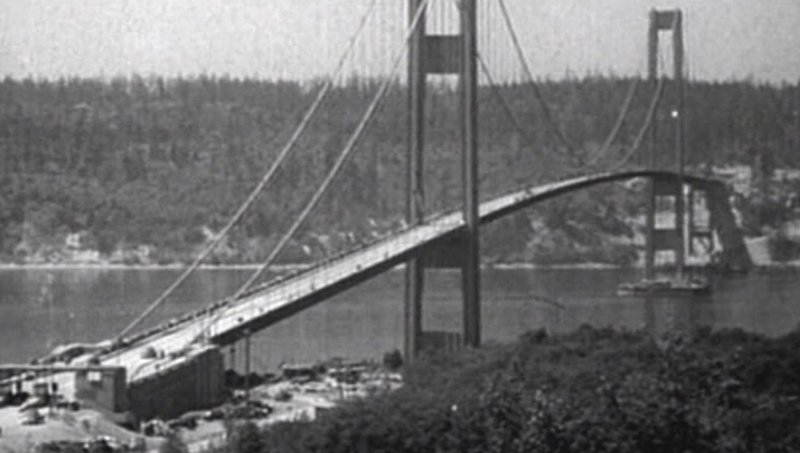
Introduction:
The Tacoma Bridge was a suspension bridge built in the 1940s that collapsed just 4months after opening. The disaster was a result of a design flaw in the structure which lead to a complete system breakdown. The Tacoma Bridge was one of the first suspension bridges built and we have learned many design challenges that exist when building a suspension bridge. One of the biggest design flaws of the Tacoma Bridge was the fact that it was not aerodynamic enough from lack of trusses. Typical bridge design is centered around trusses to allow wind passage, but in this case the severe lack of any trusses caused the wind to be forced into flow separation which lead to major oscillations in the bridge, causing it to fail. There was 1 loss of life resulting from the collapse of the bridge which was of a 3 legged dog named Tubby.

Engineering Perspective:
Tension and Vibration limits were exceeded within this structure primarily due to the fact that the bridge was a solid structure non-aerodynamic structure that had no freedom for wind to pass through it.

This image sourced from one of my references shows the structure of the bridge as opposed to a usual bridge design.
An Equation that can be used to see failure in the Tacoma Bridge is the vortext frequency which is fs=(U*S)/D , where U is flow velocity, D is characteristic length, and S is the Strouhal number. Other equations such as moments and sum of forces can be used to find the tension within the cables.
The limit that was exceeded in this structure is the amount of vortex frequency the bridge could withstand. The reason this limit was exceeded is because at the time, aerodynamic forces weren't entirely understood. The engineers did not realize that the bridge should have been tested within a wind tunnel first- They did these experiments after/during the collapse. Another limt that had been exceeded was how flexible the bridge was due to being too long and too light and the bridge itself was very narrow. This is another good reason the bridge acted so wobbly.
Lessons Learned:
Some lessons learned from the Tacoma Bridge collapse are to always incorporate trusses in bridge design so that the structure is aerodynamic enough so that the wind can flow through it instead of having flow separation around the structure. Improvements were also done to previously existing bridges to assure future safety. An example of this is the Whitestone Bridge in the US that added trusses and openings below the road decks so that the bridge can withstand higher wind speeds and decreases oscillations within the bridge. Also when the new bridge to replace the Tacoma bridge was designed they also incorporated stiffening struts with triangular open trusses for extra protection. The engineering design process was changed for bridges as well by testing them within wind tunnels.
Resources:
1. Reference 1
2. Reference 2